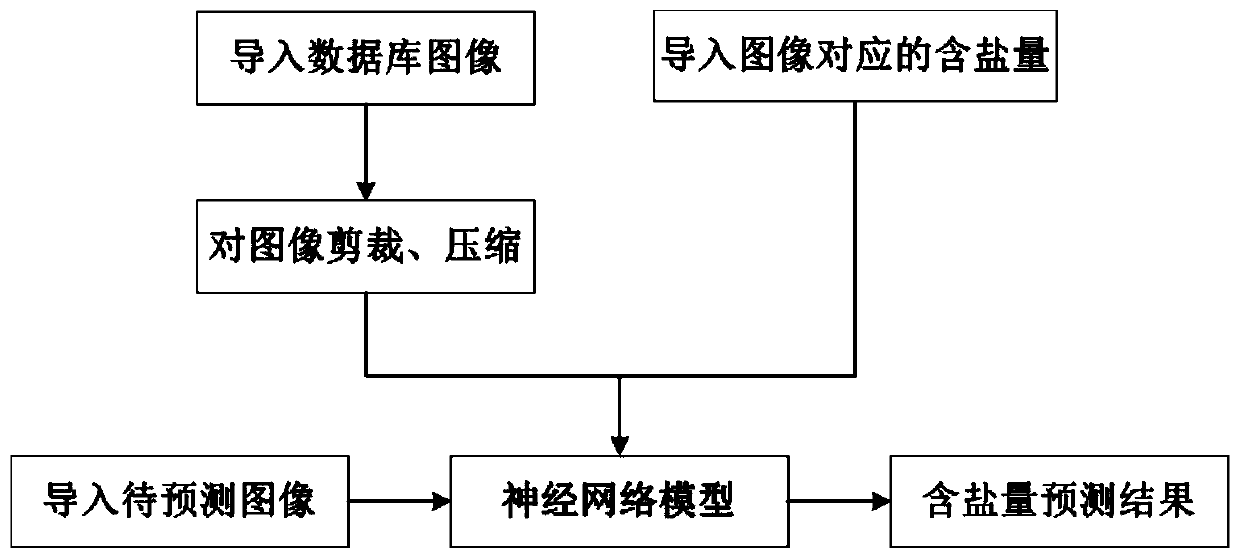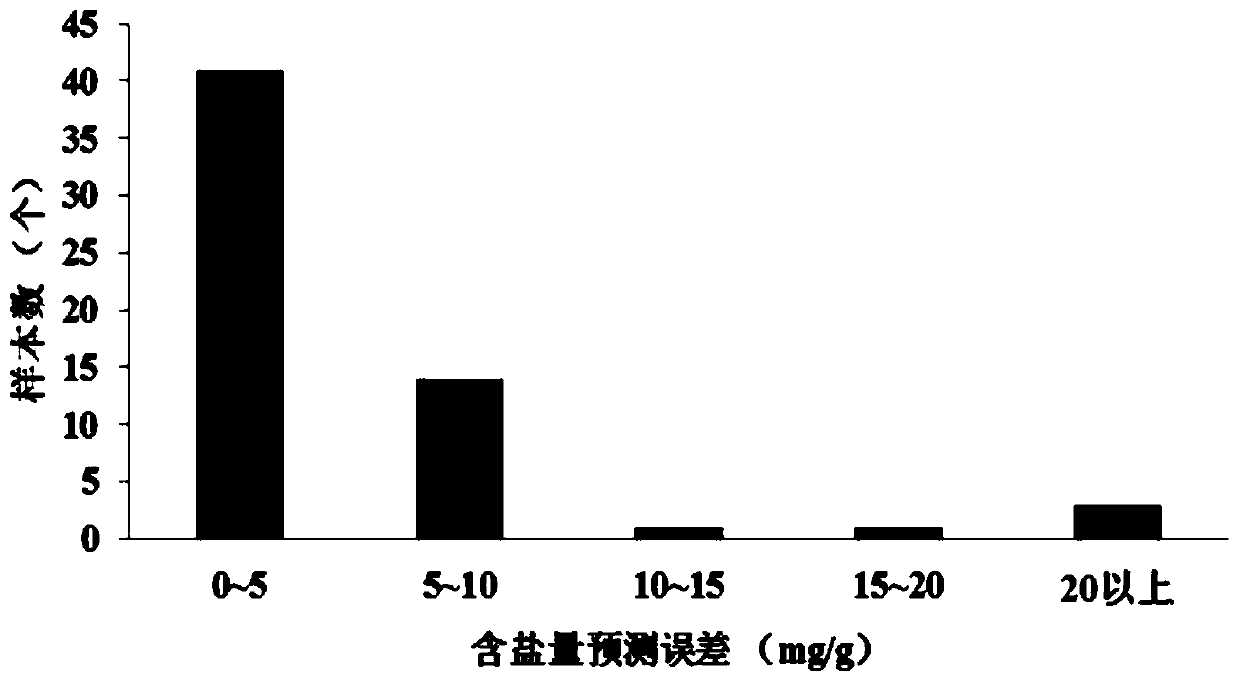Salinized soil salt content estimation method based on surface image
A technology of salt content and saline soil, which is applied in the field of salt content estimation of saline soil based on surface images, can solve the problems of complex measurement results and inaccuracy of salt content measurement methods, and achieve fast calculation speed and complex identification Low cost, saving manpower and material resources
- Summary
- Abstract
- Description
- Claims
- Application Information
AI Technical Summary
Problems solved by technology
Method used
Image
Examples
specific Embodiment approach 1
[0020] Specific implementation mode one: the method for estimating the salt content of saline soil based on surface images in this implementation mode includes the following steps:
[0021] Step 1. Shoot surface images, collect soil samples, and test the salinity data of the soil samples taken from the surface images: cut the surface images into uniform pixel images, and correspond to the salt content data one by one, and establish the surface image and salt content data. Quantitative database to obtain the training data database;
[0022] Step 2. According to the training data database, the feature extraction algorithm of the surface image is established based on CNN, and the model is established;
[0023] Step 3. Let the loss function be the sum of the absolute values of all image training errors;
[0024] Step 4, substituting the characteristics of the surface image obtained in step 2 and the salt content determined in step 1 into the model of step 2 for training, and ca...
specific Embodiment approach 2
[0029] Embodiment 2: The difference between this embodiment and Embodiment 1 is that in step 2, the CNN includes an input layer, a convolution layer, a pooling layer, a RELU layer, a fully connected layer and an output layer. Others are the same as the first embodiment.
specific Embodiment approach 3
[0030] Embodiment 3: The difference between this embodiment and Embodiment 1 or 2 is that the calculation method of the training error in Step 4 is: Substituting the characteristics of the surface image into the model to obtain an estimated value, and then the estimated value corresponds to the surface image Subtract the salinity to get the training error. Others are the same as those in Embodiment 1 or 2.
PUM
 Login to View More
Login to View More Abstract
Description
Claims
Application Information
 Login to View More
Login to View More - R&D
- Intellectual Property
- Life Sciences
- Materials
- Tech Scout
- Unparalleled Data Quality
- Higher Quality Content
- 60% Fewer Hallucinations
Browse by: Latest US Patents, China's latest patents, Technical Efficacy Thesaurus, Application Domain, Technology Topic, Popular Technical Reports.
© 2025 PatSnap. All rights reserved.Legal|Privacy policy|Modern Slavery Act Transparency Statement|Sitemap|About US| Contact US: help@patsnap.com



